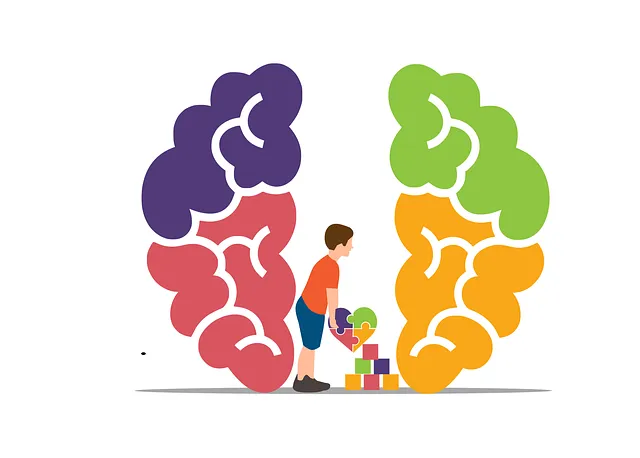The Longmont Kaiser Permanente mental health facility excels in patient safety through comprehensive risk assessment, addressing internal and external factors. By integrating self-awareness exercises and conflict resolution techniques, they empower patients with coping skills. Their harm minimization plan considers environmental, psychological, and social risks, including cultural sensitivities, using evidence-based practices like journaling and trauma support. Continuous monitoring, regular evaluations, and proactive interventions ensure a resilient environment for both patients and staff, positioning Longmont Kaiser Permanente as a leader in mental health care.
At Longmont Kaiser Permanente Mental Health Facility, risk assessment and harm minimization planning are paramount for ensuring patient safety and fostering a supportive environment. This comprehensive guide delves into the essential practices for evaluating and mitigating risks specific to mental health settings. We explore key strategies, from identifying potential harms and vulnerabilities to developing robust plans and implementing evidence-based risk management techniques. Continuous monitoring, evaluation, and improvement anchor these efforts, upholding the highest standards of care at Longmont Kaiser Permanente.
- Understanding Risk Assessment at Longmont Kaiser Permanente Mental Health Facility
- Identifying Potential Harms and Vulnerabilities
- Developing a Comprehensive Harm Minimization Plan
- Implementing Evidence-Based Strategies for Risk Management
- Continuous Monitoring, Evaluation, and Improvement
Understanding Risk Assessment at Longmont Kaiser Permanente Mental Health Facility

At Longmont Kaiser Permanente Mental Health Facility, risk assessment is a cornerstone of patient safety and care. It involves a comprehensive evaluation of potential hazards and risks within the facility, focusing on both internal factors, such as staff training and equipment maintenance, and external influences, like environmental conditions and patient demographics. This dynamic process ensures that the mental health facility can proactively identify and mitigate risks, creating a safer and more supportive environment for patients.
By integrating confidence-boosting self-awareness exercises and conflict resolution techniques into their risk assessment strategy, Longmont Kaiser Permanente goes above and beyond standard protocols. These practices not only empower patients but also equip them with valuable tools to navigate challenging situations. Such an approach fosters a culture of resilience and positive interaction within the facility, further minimizing potential harms and enhancing overall patient outcomes.
Identifying Potential Harms and Vulnerabilities

Identifying potential harms and vulnerabilities is a critical step in risk assessment for any healthcare facility, including the Longmont Kaiser Permanente mental health center. This process involves a thorough examination of various factors that could contribute to adverse outcomes for patients. Mental health facilities must consider not only physical risks but also psychological and social vulnerabilities. For instance, at Longmont Kaiser Permanente, evaluating patient populations may reveal unique challenges related to stress reduction methods and coping skills development, especially among diverse cultural backgrounds. Addressing these vulnerabilities requires a nuanced approach that incorporates cultural sensitivity in mental healthcare practice.
By implementing comprehensive risk assessment protocols, the Longmont Kaiser Permanente mental health facility can proactively identify and mitigate risks. This includes recognizing environmental hazards, assessing patient history for prior traumas or substance abuse issues, and understanding cultural beliefs and practices that might influence treatment responses. Such proactive measures not only ensure patient safety but also foster an environment that promotes healing and recovery through effective Stress Reduction Methods and Coping Skills Development tailored to individual needs.
Developing a Comprehensive Harm Minimization Plan

At Longmont Kaiser Permanente mental health facility, developing a comprehensive harm minimization plan is paramount to ensuring patient safety and fostering an environment that promotes mental wellness. This involves a multi-faceted approach where every aspect of care delivery is meticulously assessed for potential risks and implemented with strategies to mitigate these risks. The plan should encompass not just immediate dangers but also long-term considerations, including the psychological and social factors that contribute to patients’ well-being.
This comprehensive strategy includes incorporating evidence-based practices such as Mental Wellness Journaling Exercise Guidance, which helps individuals process their thoughts and emotions, and Trauma Support Services tailored to address specific needs. Additionally, integrating activities that promote Anxiety Relief can significantly enhance the overall therapeutic experience. By implementing these measures, Longmont Kaiser Permanente aims to not only minimize harm but also empower patients with tools and resources necessary for sustained mental health improvement.
Implementing Evidence-Based Strategies for Risk Management

Implementing evidence-based strategies is paramount in managing risks and minimizing harm at mental health facilities like Longmont Kaiser Permanente. By adopting approaches such as Empathy Building Strategies, which foster strong patient-provider connections, the risk of miscommunication and misaligned care can be reduced. These strategies promote Emotional Well-being Promotion Techniques, ensuring that patients feel heard, understood, and supported throughout their journey.
Additionally, focusing on burnout prevention is essential for staff well-being and consistent service delivery. Implementing practices that mitigate work-related stress and encourage self-care can help maintain a safe and positive environment. These strategies not only protect the mental health of caregivers but also contribute to more effective risk management and harm minimization planning at Longmont Kaiser Permanente.
Continuous Monitoring, Evaluation, and Improvement

At the Longmont Kaiser Permanente mental health facility, continuous monitoring is a cornerstone of risk assessment and harm minimization planning. This involves regular reviews of patient records, clinical observations, and feedback from both patients and healthcare providers to identify any emerging trends or concerning patterns. By staying vigilant, the facility can swiftly address potential risks and implement targeted interventions, ensuring optimal patient safety and well-being.
Evaluation is another critical component that allows for continuous improvement in risk management practices. Regular audits of policies, procedures, and staff training programs help identify areas needing enhancement. Incorporating Burnout Prevention Strategies for Healthcare Providers and Trauma Support Services aligns with the facility’s commitment to Mind Over Matter Principles. This proactive approach not only mitigates risks but also fosters a resilient and supportive environment where both patients and providers thrive.
Risk assessment and harm minimization planning are essential components of providing safe, effective care at the Longmont Kaiser Permanente Mental Health Facility. By understanding the unique risks within our setting, identifying potential harms, and developing a comprehensive plan, we can implement evidence-based strategies to manage and mitigate these risks. Continuous monitoring, evaluation, and improvement ensure that our practices remain robust and adaptable to changing circumstances, ultimately fostering a safer environment for both patients and staff.






